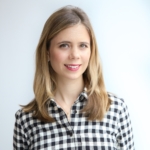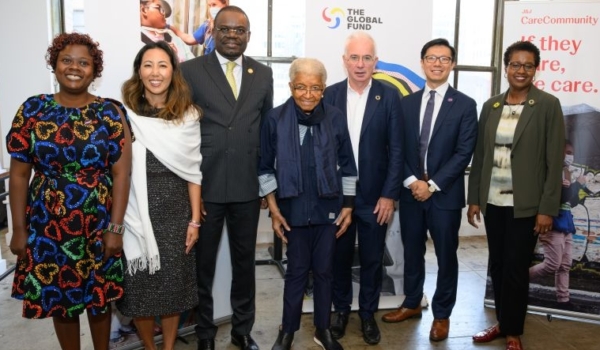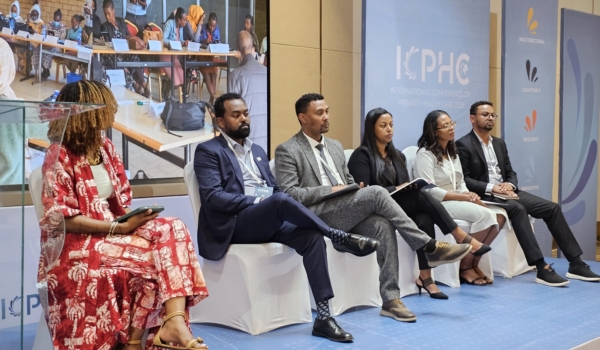Robyn Calder is the Executive Director of The ELMA Philanthropies Services (U.S.) Inc, which develops and manages strategies, investments, and partnerships for The ELMA Group of Foundations. ELMA invests in healthcare and education for children in Africa; humanitarian relief globally; social entrepreneurs fighting poverty in Africa; and music and youth development in the United States. We sat down with Robyn to discuss ELMA’s leadership in leveraging collaborative philanthropy to build sustainable health systems.
 Why did ELMA Philanthropies decide to support Last Mile Health?
Why did ELMA Philanthropies decide to support Last Mile Health?
As part of an initiative to stabilize health and education systems in post-Ebola West Africa, The ELMA Relief Foundation supported Last Mile Health’s successful efforts to improve families’ trust in their local health systems and drive up immunization rates in post-Ebola Liberia. Through the Audacious Project, we decided to combine our philanthropy with five other foundations to support the ambitious partnership between Last Mile Health and Living Goods to improve the health of millions of African families through the tech-enabled, trained, and supported community health workers.
What is collaborative philanthropy?
Collaborative philanthropy is the practice of philanthropists and foundations intentionally pooling our financial, intellectual, and human capital to solve social problems. It is strongest when the front-line change agents and their expertise are centered in the philanthropic partnerships.
What are the benefits of pooling funds for large, systems-change projects?
When pooling your funds with others, you are able to take on larger bets with increased potential impact and lower financial investment than would be possible if you made the bet on your own. The potential for impact is further magnified because each funder can benefit from the expertise, experience, and skills the other funders bring to the joint investment. You can also learn new ways of approaching systems-change, which can be plugged back into other areas of your philanthropy.
How will large scale investments in the health workforce move the needle in achieving universal health coverage?
According to the World Health Organization, up to three million maternal, newborn, and child deaths could be prevented by expanding coverage of simple interventions that well-trained, remunerated, and supported community health workers can deliver. This is why it’s critical for funders interested in universal health coverage to invest in organizations like Last Mile Health that are expanding the number of community health workers who are trained in delivering these life-saving interventions to those most difficult to reach. It is critical to also invest further up the referral system, in nurses, midwives, and the clinical and non-clinical staff who support them to do their jobs of delivering healthcare to women and children. Newborn deaths account for 44% of under-5 deaths and can largely be prevented if women are able to deliver in a health facility and that delivery is assisted by an appropriately trained nurse or midwife. Investing even higher up the system in the specialists and sub-specialists who not only deliver healthcare, but also provide leadership and innovation to the health system – and ensuring these specialists and sub-specialists are trained on the continent (and therefore stay on the continent) – is also critical.
What role does philanthropy play in achieving sustainable change?
Philanthropy can fill the gaps that government or markets can’t or won’t address. Additionally, philanthropy can invest in innovation and earlier-stage or otherwise risky/uncertain projects with high potential for impact which can then be scaled or sustained by governments, multi-lateral funding agencies, or markets. For example, The ELMA Relief Foundation and other philanthropies invested in Last Mile Health’s post-Ebola efforts, which, as mentioned earlier, demonstrated that community health workers can help drive up immunization rates. Because of these results, Gavi, the Vaccine Alliance has invested in Last Mile Health and its partner Living Goods to begin scaling this work across Liberia, Uganda, and Kenya.
How do you design a program that will not only be effective, but scalable?
Most importantly, the program should be designed by and with the people and key stakeholders from the areas the program is targeting. This helps to ensure that the program responds to the needs of its beneficiaries, is bought into by the key stakeholders who may influence its initial uptake and future scale-up, and has a more practical cost-model when compared with internationally-designed programs (that charge internationally-priced salaries, overheads, and other costs.)
How can you meaningfully engage governments, beneficiaries, and other partners?
ELMA relies on our teams based in Uganda and South Africa, and our US based staff who are regularly traveling to Africa, to spend meaningful time with governments, grantees (current and potential), co-funders, and other key stakeholders to ensure our investments are responding to the most pertinent challenges confronting children and their families. We try our best to be partners with the various government, private sector, and social sector champions addressing these challenges because we know we cannot achieve meaningful improvements in the lives of children if we act in isolation from a board room far from the continent.
How do you stay motivated when the goal is so ambitious?
I stay motivated by spending time with the change-makers and visionaries doing the important work that ELMA has the privilege to be able to contribute to.
This profile was written as part of a feature in our 2019 Annual Report, which showcases individuals from across all levels of the health system and the globe who play a critical role in the movement for universal health coverage – community leaders, government officials, philanthropists, clinical practitioners, policy specialists and more.




